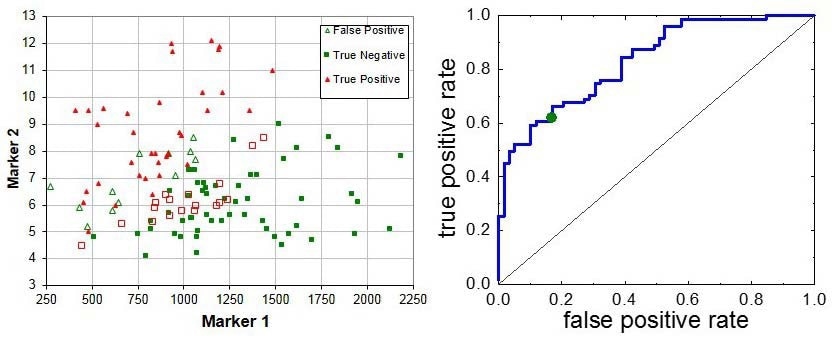Breath gas analysis of volatile organic compounds (VOCs) has been an increasing area of research in recent years. As a non-invasive method, it could be utilized for screening disease biomarkers, drug testing, studying pharmacokinetics, and monitoring metabolic processes.

Image Credit: Shutterstock/mi_viri
Benefits of IONICON PTR-TOFMS
IONICON PTR-MS systems are regarded as powerful tools for breath gas analysis. The systems’ linearity range and detection limits match the concentrations of breath VOCs, while their rapid response time and high sensitivity allow breath analysis both in real-time and online.
IONICON PTR-TOFMS can quickly record the complete spectra. Combined with a high mass resolving power, the system can detect several hundred compounds from just one exhalation.
BET-med Breath Sampling Inlet
IONICON has created a specialized breath sampling inlet for PTR-MS. The Buffered End-Tidal Breath sampler (BET) utilizes inert and heated surfaces to inhibit condensation.
The IONICON Buffered End-Tidal (BET) breath sampler has many advantages to facilitate and optimize real-time breath gas analysis. The BET sampler is compliant with medical device directives and can be used with any of IONICONs PTR-MS instruments.
Screening for Breath Markers
Searching for breath biomarkers is the typical application. In such screening studies, the breath spectra of patients/subjects with a certain condition are compared against that of healthy volunteers. IONICON PTR-TOFMS instruments are particularly appropriate for such applications due to the entire spectrum being analyzed simultaneously.1
The key breath markers are those for smoking, and these can be utilized to standardize the technique. A cross-validate accuracy (AUROC) of 99% was accomplished using the PTR-MS, and this is the best value for a large study published to date.2

Figure 1. Analyzing the breath of more than 200 subjects, several markers for smoking can be isolated. Most prominently acetonitrile, which leads to an almost perfect separation of smokers and non-smokers. Image Credit: IONICON Analytik
Lung Cancer Markers
In a multi-centric clinical study, biomarkers for the detection of lung cancer can be identified. From the integration of only two markers, a cross-validated AUROC value of > 83% was attained for the detection of bronchial adenocarcinoma.3

Figure 2. Breath markers for lung cancer require a careful analysis of the data. We found two robust markers that give an AUROC value of > 83% (cross-validated). Image Credit: IONICON Analytik
Monitoring Studies
Real-time breath analysis has facilitated novel types of studies, where a person's breath is monitored to observe the variation of one or a number of marker compounds over time. In these monitoring studies, the patients act as their own control, which greatly assists in the interpretation of data.
Pharmacokinetics
Pharmacokinetics is the study of the distribution and elimination of drugs in the body. With breath analysis, the blood concentration of a drug can be monitored in a non-invasive way and is updated with every exhalation.
In Figure 3, there is a sudden increase in the drug concentration, followed by a slow decay, and pharmacokinetic models can be developed from this. This behavior requires a high sampling frequency, which would be almost impossible with offline analysis or blood tests.4

Figure 3. Pharmacokinetical study: full exhalations, recorded every 15 minutes, which depicts the concentration of a drug in the exhaled breath after ingestion (t=0). Image Credit: IONICON Analytik
Monitoring Metabolic Effect
The majority of volatile breath compounds impact several metabolic processes. By administering isotopically labeled educts, their metabolic products can also be labeled and clearly differentiated in a mass spectrum.
This allows researchers to probe and study specific metabolic processes and deficiencies, facilitating the development of personalized medicine.5

Figure 4. Two isotopically labeled metabolites (green, blue) with individual variations over time, which arise as a result of the ingestion of a labeled compound (red). Image Credit: IONICON Analytik
References
- Herbig J, J Breath Res, vol. 3, no. 2, IOP, pp. 027004 (2009)
- Herbig J, 4th Int. Conf. on PTR-MS, IUP Conf. Series, pp. 46-50 (2009)
- Herbig J, 5th Int. Conf. on PTR-MS, IUP Conf. Series, pp. 31-33 (2011)
- Beauchamp J, J Breath Res, vol. 4, no. 2, IOP, pp. 026006 (2010)
- Winkler K, J Breath Res, vol. 7, no. 3, IOP, pp. 036006 (2013)

This information has been sourced, reviewed and adapted from materials provided by IONICON Analytik.
For more information on this source, please visit IONICON Analytik.